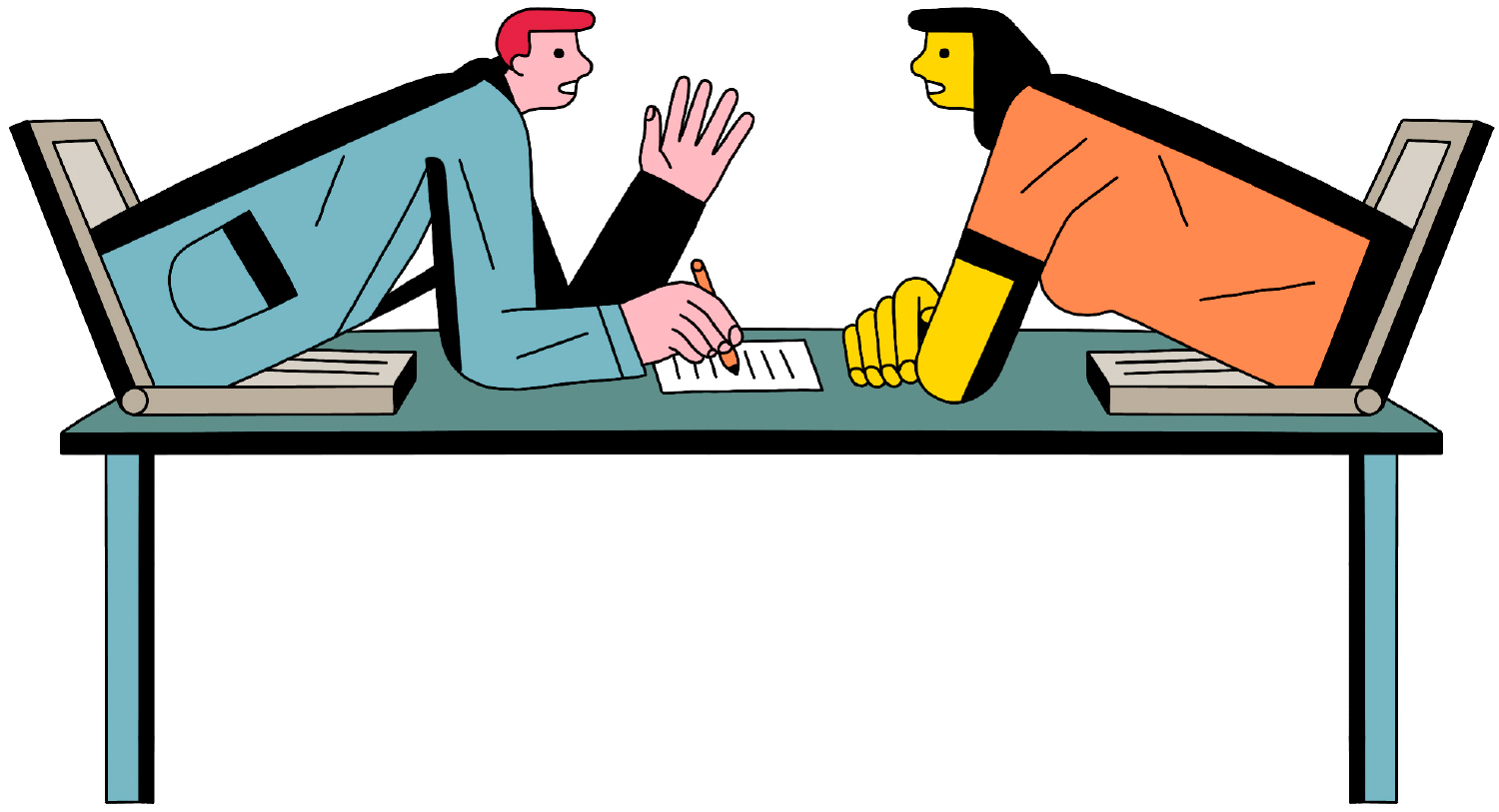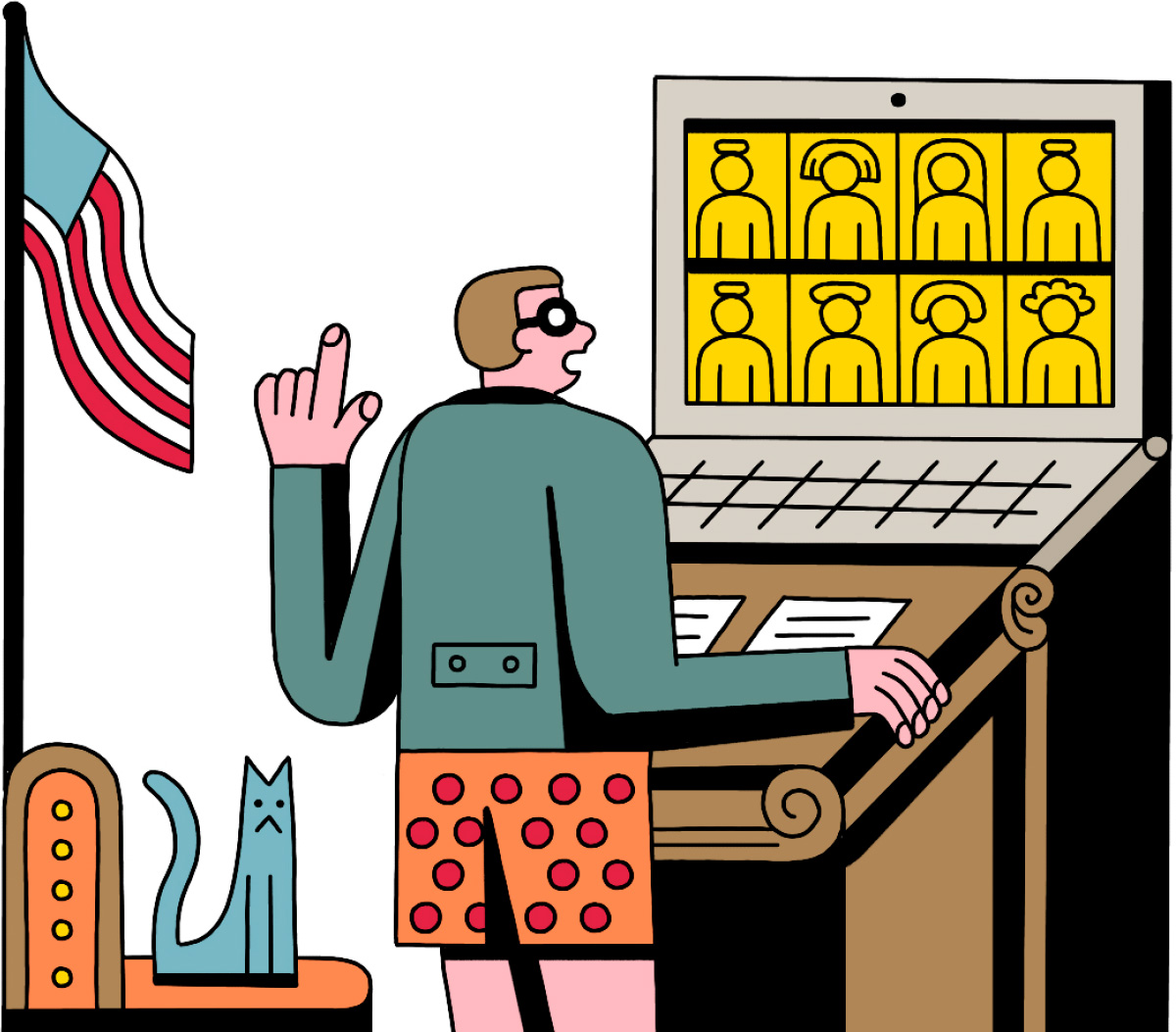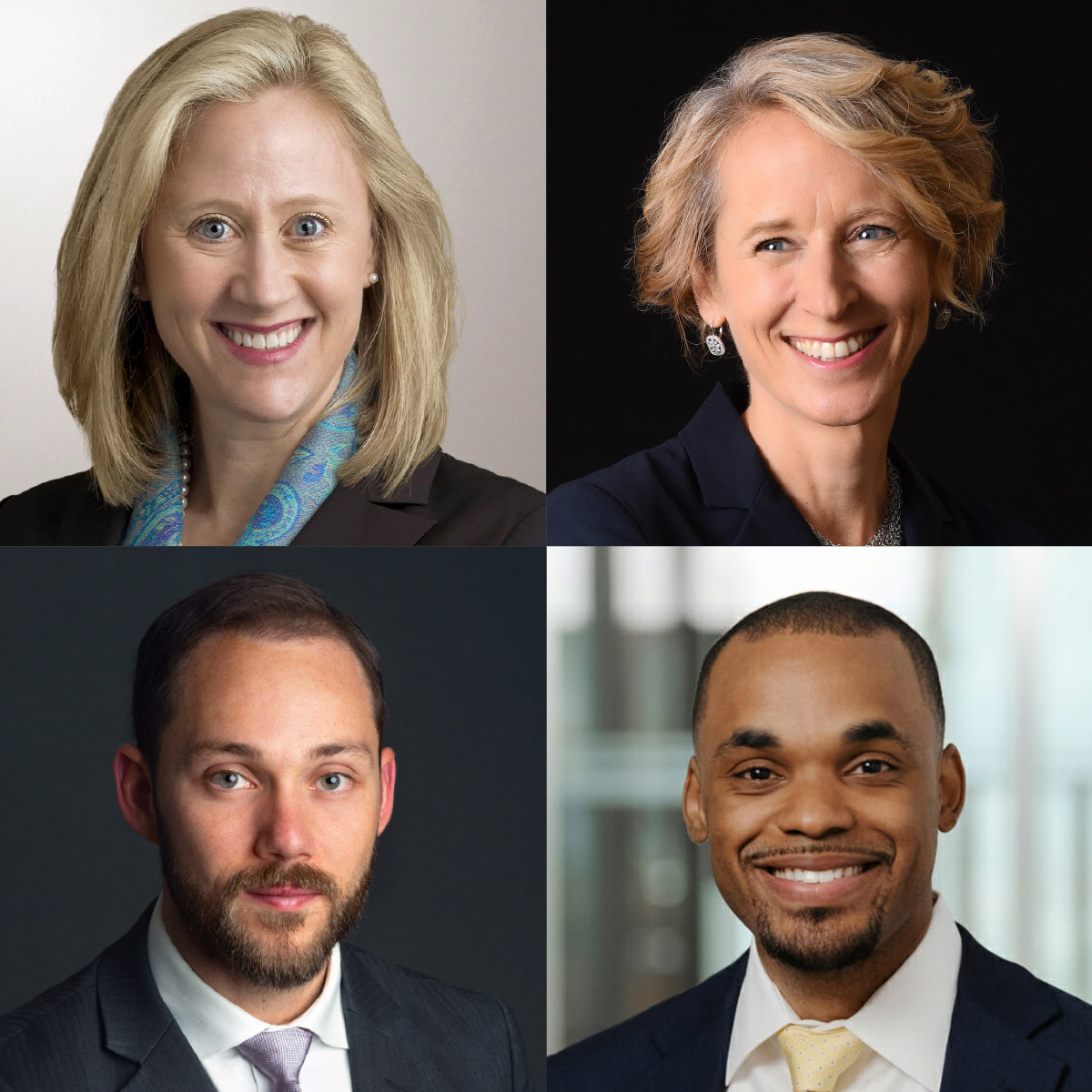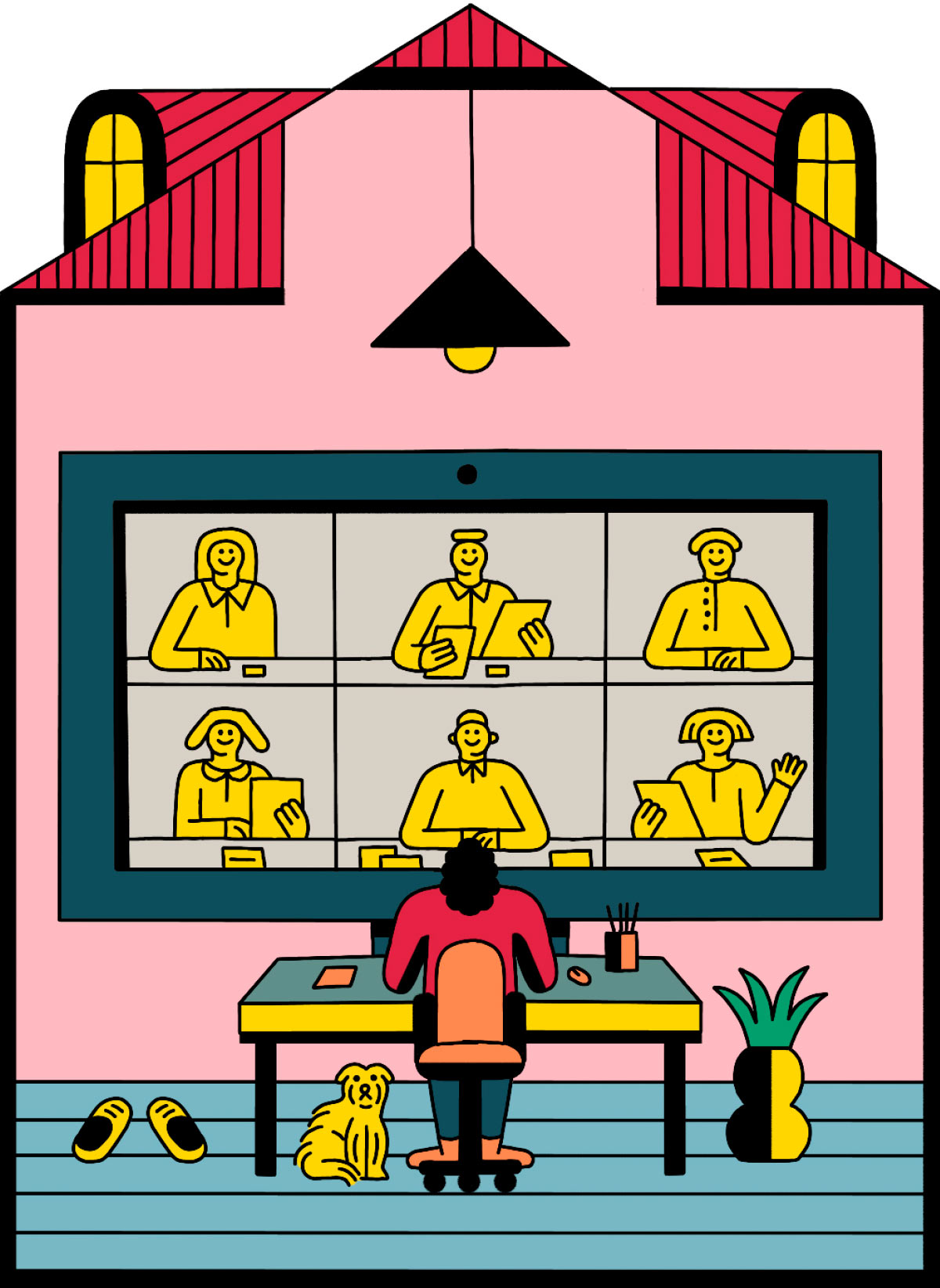Practicing Law in a Post-Pandemic World

“Then COVID hit,” says Professor Melnick, shaking his head.
By the end of spring break, he and every other professor, student, and most of the 1.3 million lawyers in America had become Zoom experts. Not only did remote meetings and classes become the norm, but video depositions, telephonic bail hearings, virtual trials, and court proceedings swept into the practice of law—which, historically, is not a field known for its rapid adoption of technology.
“Actually, it’s one of the slowest,” says Melnick, who notes that if the pandemic had hit just a few years earlier, the field would have been thrust into total chaos. “But if COVID had to come along, this was a good time. The technology was there. We weathered it.”
Nevertheless, the changes that have happened in legal education and the field itself since 2020 have been seismic. And while some may end up being temporary, many are here to stay. From courtroom judges and private firms to defense lawyers and clinical law professors, the shifts fueled by the pandemic are affecting the way law students learn, find jobs, and kick-start new careers. For 1L students, these changes are simply the new norm. But for lawyers who have been practicing for years, the shift has been almost surreal.
Trial by Fire
Benefits such as reduced travel times and expenses as well as increased productivity convinced lawyers and judges that many aspects of civil cases could and should be heard by video or phone. In fact, 90 percent of civil conferences are still being held remotely, according to Judge Parker.
Civil trials, says Professor Michael W. Martin, associate dean for experiential education, who teaches the school’s Federal Litigation Clinic, can and do benefit from up-close videos of witnesses and exhibits. “We’ve been putting computer screens in jury boxes to present evidence for some time now,” he points out. “This is the next generation of that. People are beginning to see that this technology is at least equivalent to in-person.”
The Limits of Law on Screens
The other problem with video hearings is something most of us, lawyer or no, have experienced at one time or another over the past two and a half years: On video, people often aren’t dressed for court (or fully dressed at all), never mind having a proper Zoom background in place. “You had people calling while driving in their cars, or from their backyard,” says Judge Parker. “I know that some courts had to remind lawyers and litigants that they had to dress appropriately and not be in a tank top and remember the formality of the process.”

A Matter of Trade-offs and Adaptations
“Family court is a situation where you’re making truly profound decisions about people’s lives, including who gets custody of a child, whether a child should be taken away from a parent because of abuse or neglect, and whether and when a child should return home from foster care,” says Professor Huntington. “Suddenly, judges were trying to make these life-and-death decisions without the actual people in the room.”

Adding to the disconnect, a 10 a.m. introductory phone call with a client is often followed by a hearing just a few hours later. “That doesn’t leave a lot of time to get to know the person, especially if you’re not sitting next to them.”
The lack of face-to-face contact can also provoke a breakdown in the client-attorney relationship. “Clients tend to become impatient much quicker or feel you’re not hearing them,” says Ruben. “They’re more likely to get upset or just throw their hands up and say, ‘Whatever.’ And once there’s a breakdown, it’s harder to repair the relationship if you can’t see each other in person.”
And with a very heavy caseload, being able to work remotely has freed up his time so he can better investigate and advocate for his clients. “Before, in the hours before a bail review hearing, I was trying to make calls for my clients from inside the jail, which is a severely under-resourced and hellish environment,” he says. “For one thing, there was only one phone. Now, I can sit in my home and do the investigation before the actual bail hearing. So that’s been good.”

Making the Law More Transparent
That crucial issue of transparency carries over to civil practice, as well. Derick Dailey ’17, a former federal prosecutor and now private litigator in the firm Davis and Gilbert LLP in Manhattan, believes that virtual litigation should remain the norm. “The critical piece for me is that it allows the law to be more available to everyday people. That’s really, really important for the rule of law and the overall health of our judiciary,” he emphasizes. “We need people to know what we do as lawyers—the big and the small. And technology allows us to do that.”
Initiating complaints has also gotten easier thanks to virtual hearings—especially for pro se plaintiffs and small businesses—as has scheduling depositions, hearings, and other court conferences, Dailey notes. As members of the public have greater access to the courts and the law through technology, they become more aware of their rights. Equally important, they also become more aware of their obligations under the law—obligations to comply with court deadlines and litigation processes.
Of course, it can be harder to connect with people personally during virtual depositions and trials. In person, says Dailey, you can sense energy, feed off that energy, and create a rapport. “While it’s possible to do the same thing virtually,” he acknowledges, “it may take longer—and you have to learn how to do it.”
A stable internet connection, a distraction-free environment (both soundwise and visually), and good lighting are essential, for one thing. “You’d be surprised how many attorneys and law students are forced to go without these basics,” Dailey says. “And without them, a witness can get distracted and an attorney may not be able to keep the person’s attention and focus in an examination.” To establish a bond, attorneys also need to speak slowly, use plain speech, communicate with their eyes and body language, and develop a conversational tone rather than adopting a rigid Q and A style.
In appellate court and other situations where arguments are strictly oral, some foresee an especially slow return to a brick-and-mortar courthouse. In the Second Circuit Court of Appeals, for instance, which covers a vast area including New York, Connecticut, and Vermont, it’s no longer necessary to travel long distances for a hearing.
“In cases where you have lawyers and judges simply talking about the law, I see Zoom sticking,” says Professor Martin. “Faces can be seen; voices heard.” The downsides? “Not unlike churches, the majesty of the courthouse and courtroom has long contributed to the perception of our judicial system’s legitimacy. Indeed, it would be hard for anyone invested in the system to believe that these large courthouses and magnificent courtrooms might go unused,” he says.

Certified Tech Savvy
efore COVID hit, Fordham’s Maloney Law Library had been offering a law practice technology class and hour-long Lunch ’n Learn programs on topics such as e-discovery and artificial intelligence. But this past fall, the library took it all a step further, announcing a new, voluntary certificate program available to all Fordham Law students, for free. “Technology had already been slowly transforming the practice of law,” says Todd Melnick, head of the law library. “But COVID gave the legal profession an extra push.”
The goal of the program, says Melnick, is to make sure students develop at least a basic level of technological awareness and competence. “That’s what the practice of law now demands,” says Melnick. A plus is that students who have gone through the program now have a way to communicate their technological competence to potential employers.
Inspiration for the certificate program also came from the ABA Model Rules of Professional Conduct as adopted by New York and many other states: “To maintain the requisite knowledge and skill, a lawyer should … keep abreast of the benefits and risks associated with relevant technology….”
Students enrolled in the certificate program complete three modules through the online platform Procertas Legal Technology Assessment (LTA). Among other things, Procertas teaches students to efficiently and artfully use Word, Excel, PDFs, and PowerPoint in the context of legal practice. “It used to be that you could simply write a long, detailed memo,” says Melnick. “Now, many clients prefer a PowerPoint deck.”
The new program is done in combination with the library’s existing Lunch ’n Learn expert workshops. Students are required to attend a total of five Lunch ’n Learn sessions, which are designed to give students an overview of the technological landscape in the practice of law. Workshops are taught by experts, vendor representatives, and law librarians, and cover topics such as artificial intelligence for legal practice, blockchain, smart contracts, e-discovery, automated contract review, cybersecurity for legal practice, matter and document management, docket analytics, and others. Alternatively, students can take the two-credit Law Practice Technology course offered every spring, which covers the technology of legal practice. As Melnick emphasizes, these skills are not simply about prepping law students for the future, but for the here and now. “Law firms don’t want to train new associates in these skills,” says Melnick. “They expect them to come out of law school knowing them.”

Another concern is how to preserve text messages, Snapchat posts, and other ephemeral messaging that disappears after five minutes. “There are so many new challenges on the e-discovery front,” admits Martin. “Everything is changing and it’s fascinating to see it. And it took a pandemic to get us there.”
A Different Way of Educating Students
Fordham Law’s trial advocacy competition team and securities arbitration clinic events are now completely online and may stay that way. “When everything got canceled in 2020 there was a real void and a lot of disappointed students,” says Shlahet, who teamed up with a professor from UCLA and started an online competition within weeks of the initial lockdown, attracting 170 participants from 67 law schools. A year and a half later, Professor Shlahet’s students are winning national tournaments because they were such early adopters to Zoom.
But while the platform allows for slick PowerPoint presentations and a certain intimacy with witnesses, the emotional connection that comes into play during opening and closing arguments is lost, says Shlahet. “You can see the jury in front of you, but you can’t make eye contact. You are speaking into the ether.” So while some proceedings and arguments will likely continue remotely, the question of whether jury trials will ultimately transition remains open.
A New Way of Networking and Navigating
Still, the pandemic meant the temporary suspension of Fordham Law’s extensive, in-person on-campus interview program where, at the end of July, more than 100 potential employers, primarily from large law firms, would visit the Lincoln Center campus for interviews with rising 2L and 3L students in search of summer and permanent jobs. For the past two cycles, these interviews have been virtual, though not always via Zoom. Different platforms have popped up, including Flo Recruit, which helps career planners set students up for their virtual meetings.
Schreiber believes that virtual job interviews may be here to stay, at least to some degree, due to their convenience and the fact that they cost potential employers less time and money. “That decision is going to be driven by employers rather than law schools,” says Schreiber. “It’s easy for someone to get in a cab and come to our beautiful building from a midtown law office, but to travel to a law school that is situated far away, well, not so much.”
Another area where video has been a major success and will continue to thrive is in extracurricular special events, where law schools can now more easily bring in guest speakers from across the globe. And these events are more popular than ever: At a recent panel discussion with partners of boutique law firms, more than 60 students participated though a nor’easter had prevented in-person classes that day. “It feels less organic because you can’t shake hands and meet face-to-face,” says Schreiber. “But because of Zoom, we could still meet, despite the weather.”
Mentoring and networking, however, may suffer due to the remote revolution. According to a recent survey by the American Bar Association, just over half of lawyers surveyed (54 percent) said they were still doing all their work remotely, although many of them (73 percent) said they missed seeing colleagues in person.
That means young lawyers can’t simply pop their head into a partner’s office and ask a question or get to know senior lawyers while grabbing coffee in the break room. Young clerks and junior associates will have to be more proactive on the job, and law firms will have to make it a point to host mentoring events.
“The law is an apprenticeship,” says Judge Parker. “It’s important for young lawyers to learn by doing, observing, and through informal interactions in an office.” That doesn’t happen in the same way if they have to schedule a Zoom call. “It’s a real disadvantage to beginning lawyers.”
For others, it’s business as usual.“These kids have been networking remotely and virtually for as long as they’ve been alive,” says Dailey. “When I think of my 10-year-old nieces, all they know is virtual networking.”
Of course, whatever the field, “Change is always challenging, especially in a profession like ours that’s sort of grounded in and governed by tradition and custom,” says Dailey. “But I’m quite optimistic and have a lot of hope in this generation of lawyers coming up. I think they’re going to get this right and teach all of us what lawyering can be.”